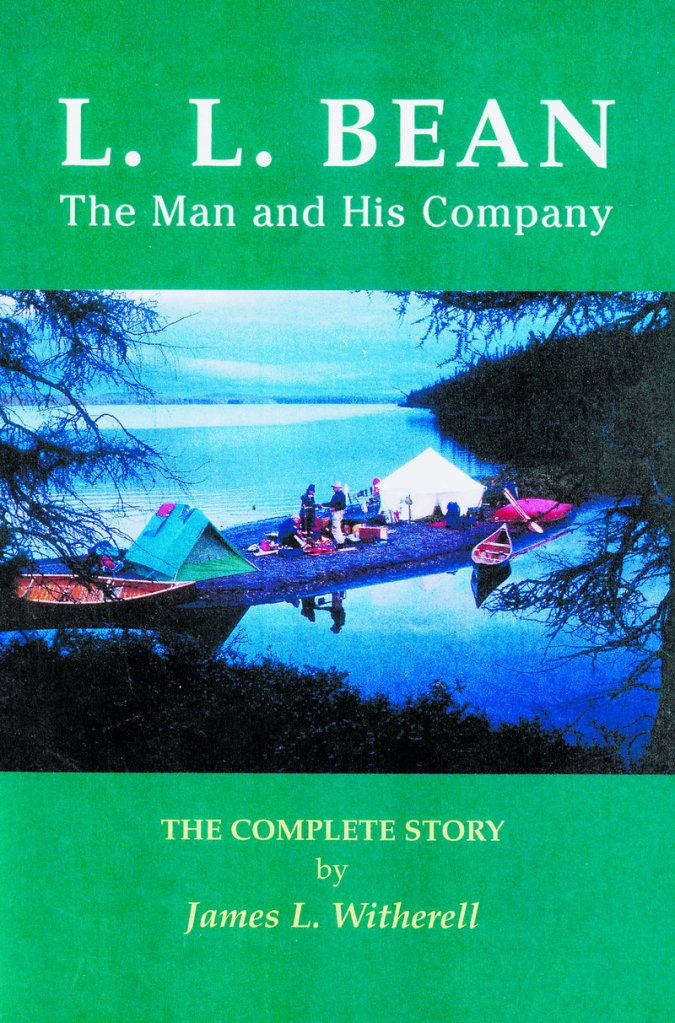James L. Witherell, a Lewiston writer and Maine Guide, presents the general reader with the latest, and by many measures the finest, overall study of the state’s most celebrated outdoor sporting goods merchant and the most famous company in Maine.
“L.L. Bean, The Man and His Company: The Complete Story” is carefully researched (hitting many sources unexamined previously) and is great fun to read. It takes readers on a tour from the founding of the Bean family on American shores to the “L.L.,” and from the company’s rise under grandson Leon Gorman to present-day operations under president and CEO Chris McCormick.
My first and only quibble is the subtitle, “The Complete Story.” As the old farmer replied to the professor when asked if he’d lived in Maine all his life: “Not yet!”
Writing about Leon Leonwood “L.L.” Bean (1872-1966) is like trying to write about Daniel Boone. Neither wrote or said much, but what they left behind was pithy, quotable and subject to interpretation.
Trying to document the Bean business is akin to watching and charting a hummingbird. Patience and special equipment can help, but just when one thinks its pattern has been figured out, the creature is off on another tack.
In the interest of full disclosure, I was twice hired, with a colleague, to prepare company scrapbooks (anthologies of articles from the beginning). These were freelance engagements. I was never a Bean employee, nor were there royalties.
Witherell divides his book into 12 chapters with notes and, I am pleased to say, an index. Thus, students will be as well-served as casual readers.
The book starts with a grant of land from the town of Exeter, Mass., in 1661 to John Bean, and follows the settlement of the family in western Maine, where “they were about as close as they could have come to being native New Englanders without having been a member of one of the area’s Wabanaki tribes.”
The story has never been told from such an early point of development, and when Witherell covers well-trodden paths — the early, rather typical rural childhood of “L.L.” and his siblings, fishing and trapping, the death of both parents and the scattering of the Bean children — he doesn’t miss a step.
Indeed, he has more information to work with than any previous biographer. There have been thousands of newspaper and magazine articles, Harvard business studies and the illuminating book, “L.L. Bean: The Making of an American Icon,” by Gorman (2006).
The second part of the Witherell’s book runs six chapters and explores “L.L.,” his early years and the heroic and classical eras of the business. We learn how “L.L.,” approaching middle age, hit on an idea — the hunting shoe (Bean Boot) — followed by the development of his image as a woods-wise sportsman-merchant.
Witherell proves to be good at exploring Bean’s camps, “L.L.” as an outdoorsman and a businessman (with his strengths and later lack of interest in the future). He also provides insight into Gorman’s ability to understand these strengths and weaknesses, and his canny development of a million-dollar static company into an international force.
If you don’t know Beans, you can claim to after a reading this first-rate book.
William David Barry is a local historian who has authored/co-authored six books, including “Deering: A Social and Architectural History.” He lives in Portland.
Send questions/comments to the editors.



Success. Please wait for the page to reload. If the page does not reload within 5 seconds, please refresh the page.
Enter your email and password to access comments.
Hi, to comment on stories you must . This profile is in addition to your subscription and website login.
Already have a commenting profile? .
Invalid username/password.
Please check your email to confirm and complete your registration.
Only subscribers are eligible to post comments. Please subscribe or login first for digital access. Here’s why.
Use the form below to reset your password. When you've submitted your account email, we will send an email with a reset code.